Carl E. Olson's Blog, page 194
September 22, 2012
Unity of Faith in a Diversity of Traditions
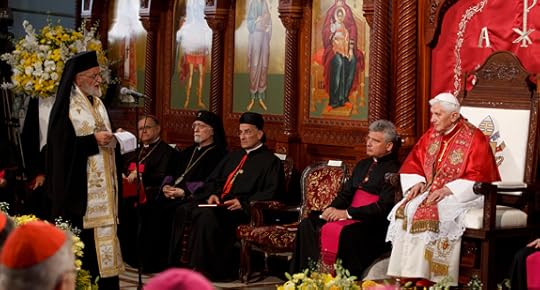
Unity of Faith in a Diversity of Traditions | Christopher B. Warner | Catholic World Report
Pope Benedict XVI’s plan for enriching cooperation among the Churches of the Middle East
It was
impossible not to notice the colorful, varied display of liturgical vestments
and clerical garb during the recent papal visit to Lebanon. The rich cultural
diversity among Christians in the Middle East gives witness to the Apostolic
traditions which began to develop almost immediately and independently from
each other at the very beginning of Christianity. As the Apostles spread the
gospel and worship of Jesus Christ to the far corners of the known world,
distinct liturgical traditions naturally burgeoned as local churches took root.
The six
liturgical traditions of the Catholic Church were conspicuously present by the
end of the fourth century and are still celebrated in Lebanon and throughout
the Middle East today: the Liturgy of St. Mark (Coptic and Ethiopian), the
Liturgies of Sts. John Chrysostom and Basil (Greek Melkite), the Liturgy of St.
James (Maronite, Syrian, and Syro-Malankara), the East Syrian Liturgy (Chaldean
and Syro-Malabar), the Armenian Liturgy, and the Latin Mass.
Pope Benedict
XVI strongly affirmed this diversity of traditions as a harmony within the unity
of faith in his post-synodal apostolic exhortation “The Church in the Middle East,”
which was signed and distributed to the major hierarchs during his recent visit
to Lebanon:
Like my Predecessors in the
See of Peter, I wish here to state once more my desire to ensure that the rites
of the Eastern Churches, as the patrimony of the whole Church of Christ in which
shines forth the tradition coming down from the Apostles through the Fathers,
and which, in its variety, affirms the divine unity of the Catholic faith, are
observed and promoted conscientiously.
Pope Benedict dedicated a large portion of
this exhortation to urging the different Churches to pray, learn, and work
together in order to promotes true communion among Christians and true peace,
which he defined as “the state of those who live in harmony with God and with
themselves, with others and with nature.” He invited the Catholics of the
various ecclesial communities to foster relationships with each other and to be
mutually engaged in one another’s traditions.
September 21, 2012
Mark Brumley answers 7 questions about Bibles published by Ignatius Press
On the "Catholic Bibles" blog:
Mark Brumley is President of the Board of Directors of Guadalupe
Associates and
Chief Executive Officer for Ignatius Press. He also oversees magazines
for
Ignatius Press, is project coordinator for the Ignatius Catholic Study
Bible,
and is editor of Ignatius Press's Modern Apologetics Library and A Study
Guide
for Joseph Ratzinger's Jesus of Nazareth. You can hear him regularly on
the popular radio program Catholic Answers Live. Mark was kind enough
to answer my "7 Questions" surrounding the RSV-2CE and Ignatius Catholic Study Bible.
1) The Revised Standard Version-Second Catholic
Edition remains the most popular translation as expressed by a majority of the
readers of this blog. Could you speak a little bit about how the RSV-2CE came
to be? Some of my readers have expressed a desire to know more about the
changes from the original RSV-CE, particularly since the RSV-2CE does more than
simply eliminate the archaic English from the text. One example would be the
additions found in Sirach 24 of the RSV-2CE. Another would be changes similar
to what we see in Luke 9:31, where “departure” was changed to the more literal
Greek rendering of “exodus”.
Brumley: The history of the RSV2CE is straightforward.
We published for many years the so-called Blue Bible, the Ignatius Bible, the
Catholic Revised Standard Version. Many people loved it but some didn't like
that the occasional archaic language of the translation--the "thees" and "thous"
used in direct addressed to God. So we looked into a slight revision, while
still keeping the Blue Bible available. Meanwhile, in discussions with the
Congregation for Divine Worship, we became aware that some folks in the Vatican
wanted a Bible that fit better with the norms for liturgical translations as
found in Liturgiam Authenticam. So our edition of the Bible was reviewed by the
Congregation and several biblical experts to make it more in conformity to
Catholic liturgical use. That is why it's really a sort of RSV Catholic Edition
Plus--plus a more standard English reflecting the removal of the archaic
language and an enrichment of the translation of the text to reflect the
Church's liturgical tradition.
2) Are there any future plans to release the
RSV-2CE in different editions? Some readers have expressed a desire that Ignatius Press publish
a full RSV-2CE compact, as well as a large print edition.
Read the entire interview. Visit www.ignatius.com for more information about Bibles published by Ignatius Press.
The Gospel of St. Matthew: The Unity of the Life of Jesus

The Gospel of St. Matthew: The Unity of the Life of Jesus | Erasmo
Leiva-Merikakis | From the Introduction to Fire of Mercy, Heart of
the Word (Vol. II): Meditations on the Gospel According to St.
Matthew
The Gospel according to St. Matthew is not a text simply stringing
together haphazard events and occasions that present Jesus teaching
valuable and true things. Beyond this, the Gospel text portrays the
unity of Jesus' whole life. Very likely the earliest nucleus of the
Gospel
text is what is now its conclusion, that is, the narrative of Jesus'
Passion, death, and Resurrection, which narrative no doubt constituted
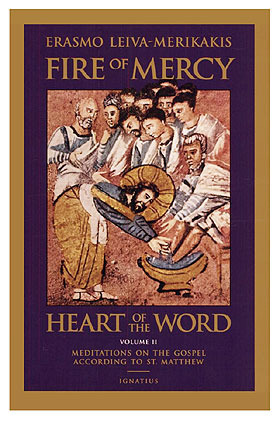
the heart and substance of the primitive oral kerygma, or
"proclamation" of the faith by the apostles and their successors.
Everything else in the Gospel text came later, composed to show how
everything in
Jesus' life and teaching eventually had to lead to his atoning death
out of love.
In Matthew's Gospel we see how, against all obstacles and opposition,
Jesus moves with a sovereign sweep from the promises of God in
the Old Testament, fulfilling them in his Incarnation as Messiah, to his
identity as a man who does divine things and speaks divine words
(parables, miracles, encounters, discourses), to the culmination
of the story in his Passion, death, and Resurrection, and, finally, to
the conclusion of the story in Jesus commissioning the apostles
to do what they have seen him do and teach what they have seen him
teach. In the end, they are to become what they have seen him be.
Thus, the main message of Matthew's Gospel is that we are not saved by
detached "doctrines" or "truths", but by the whole life of this man,
Jesus of Nazareth, in all its fullness and unity. All Christian
theology is but a systematic reflection on this life, on everything
it
reveals about God and us and on everything this revelation implies
for our own future life and behavior.
In the Gospel, Jesus Christ the person and his action in our lives
have absolute primacy over anyone's teaching about Jesus Christ.
A comparison of the very beginning of the text with its very end
may serve to detail the overarching unity of Matthew's Gospel and
its fundamental message. At 1:23 Matthew inserts a quotation from
the prophecy of Isaiah (7:14): "Behold, a virgin shall conceive and
bear a son, and his name shall be called Emmanuel (a name
which
means 'God with us')." If we then turn to the last sentence in Matthew,
we read: "Lo, I am with you always, to the close of the age"
(28:20). Now, these are words that only an incarnate God can speak
with truth, and we suddenly realize that everything between these
two
quotations-the promise and its everlasting fulfillment--is meant by
Matthew to represent an unfolding of what it means for "God to be
with us" in the person of Jesus. Between these two passages there
are five major sections of the Gospel, perhaps symbolic of the five
books of the Pentateuch that constitute the Torah. Matthew's Gospel,
thus, through its symbolic structure, is apparently claiming to
contain
God's definitive words and deeds, which fulfill and surpass the
Torah
but only through the presence and action of Jesus, the living Word
made flesh: "It was said to you .... But I say to you" (cf. Mt
5:21-22, 27-28, 31-34, 38-39, 43-44).
Many other such layers of deliberate structuring may be discovered in
Matthew's Gospel. It is possible to describe its total design
as follows: The text consists of a body in five major segments, preceded
by an introduction (Jesus' genealogy and infancy, 1:1-2:23)
and culminating in the heart of the Gospel-the Passion, death, and
Resurrection narrative (26:1-28:20). Each of the five central sections
(3:1-7:29; 8:1-10:42; 11:1-13:52 13:53-18:35; and 19:1-25:46) may in
turn be subdivided into a "narrative" and a "discourse" component (see
tabulation on page 329), and it is possible to detect a correspondence
between the events of the narrative and the theme of
the discourse that follows it. And each of these five sections
concludes
with a formula such as "And when Jesus finished these sayings"
(7:28).






There may well be an important theological point being made here
through this structural arrangement, namely, that the Gospel is
first
and foremost about the interactive encounter between Jesus and
humanity, portrayed in a narrative. All subsequent words of
teaching and
instruction, even those coming from Jesus himself, are but a persuasive
reflection that seeks to delve more deeply into that primordial
encounter in order to help the reader make it his own.
For instance, in the fourth central section (13:53-17:27) we read in
the narrative portion about the feeding of the five thousand, then
of
the four thousand, about Peter's confession and his commission, and
about the Transfiguration. Clearly, these are all events that
portray
different aspects of "church"--how Jesus fashions a community of
believers out of the random scattering of humanity. What then follows in
the discourse portion of section four is a formal exhortation
sometimes called the "Sermon on the Church" (18:1-35), which deals
with the qualifications for membership in the Kingdom, fraternal
relations of either scandal or edification, and above all
forgiveness.
Such a structural feature as we here describe--this thematic
correspondence between "narrative" and "discourse" in each
section--reminds us from a fresh angle that the Gospel is never mere
philosophizing but always a portrayal of the Word incarnate, the
eternal
Son and Wisdom of the Father in whom event and word, prayer and
deed, are one. Christ Jesus is no mere brilliant teacher and
itinerant
prophet; he is the divine Son made flesh, the person who, all at
once,
is cosmic Event, Word of truth, and Deed of salvation, and this dynamic
richness of identity in Jesus is what the Gospel manifests at
each step, both in its individual parts and in its total structure.
If, in our imagination, we put the Gospel text back into its original
context of oral transmission, before it evolved into the form of
a written text, we will begin to see its character as the record of
an
encounter between persons. The Gospel is not primarily words
written in a book: this is only the final stage of a process that began
with Jesus' real historical presence and interaction with people in
the
world. When the Gospel is proclaimed in the praying assembly of
believers, we participate in the living memory of the Church from
the
beginning, the Church that was so careful to communicate in a living
way and hand down to each generation of Christians the treasure of
her experience of the Lord's presence in her midst.
The Gospel is a living tradition, something alive in our hearts and
memory insofar as we are Christians, something continually shaping
and nourishing our faith, thoughts, and deeds. This is why the
Gospel
is never more itself than when it is publicly proclaimed, heard, and
commented upon during the Liturgy of the Word.
For instance, when we hear the Gospel of the Beatitudes (Mt 5:1-12)
proclaimed on a given Sunday, we sense that that is the original
setting in which the Gospel was meant to be read. Such a text
communicates to us, not a historical sketch of someone who lived in the
past and is interesting for a number of good reasons. Rather, such a
text evokes a presence, not only by stimulating the power of imagination
and memory, but by the power of the sacramental action of the Church in
the Eucharist. The words of Matthew's Gospel are inseparable from the
Eucharistic Sacrifice, because in his Gospel Matthew is proclaiming an
event and a person that want to become a saving
reality here and now in my life and in the life of all mankind. [3]
We must conclude, then, that the genre of the Gospel is not that of
pure "history"; but neither is it that of myth, fairy tale, or legend.
In
fact, evangelion constitutes a genre all its own, a surprising
novelty in
the literature of the ancient world. Matthew does not seek to be
"objective" in a scientific or legal sense. He is writing as one whose
life has been drastically changed by the encounter with Jesus of
Nazareth.
Hence, he is proposing to his listeners an objective reality of
history,
but offered as kerygma, that is, as a proclamation that bears
personal
witness to the radical difference that reality has already made in
his
life. Whether this encounter with Jesus of Nazareth occurs literally
in
the flesh or spiritually through the faith of the Church
is not as important
as the fact that it does take place.
We, living twenty-one centuries later, are at no disadvantage! We should
not want to answer questions that the evangelists themselves did not
raise: the color of Jesus' eyes and hair, his height, and so on. Nor is
it essential to ask: Did this or that occur precisely in the way
described in the text? The historical nucleus obviously at the very
center of the Gospel narrative is inseparable, in keeping with the genre
of the evangelion or "good news", from the response of faith with
which Matthew presents it so as to persuade his listeners to enter into
the same experience of encounter with Jesus. This encounter will
hopefully result in the transformation of their lives. When we approach
the text of Matthew we must come to share in his own faith if we are
fully to understand what he has written.
ENDNOTES:
[3] The unity of word, sacrament, and Christian life as constituting the
total Mystery of Christ has seldom been explored so profoundly as in
Jean Corbon, The Wellspring of Worship
(Mahwah, NJ.: Paulist Press, 1988; new edition by Ignatius Press, 2005).
Related IgnatiusInsight.com Articles and Excerpts:
• The Disciple Contemplates the Mother | Erasmo
Leiva-Merikakis | An excerpt from The Way of the Disciple
• Selections from Jesus, The Apostles, and the
Early Church | Pope Benedict XVI
• God, The Author of Scripture | Preface to
God and His Image: An Outline of Biblical Theology | Fr. Dominique Barthélemy, O.P.
• Going Deeper Into the Old Testament | An Interview
with Aidan Nichols, O.P.
• The Pattern of Revelation: A Contentious Issue |
From Lovely Like Jerusalem | Aidan Nichols, O.P.
• Origen and Allegory | Introduction to History and Spirit:
The Understanding of Scripture According to Origen | Henri de Lubac
• How To Read The Bible | Peter Kreeft
• God Made Visible: On the Foreword to Benedict XVI's Jesus of
Nazareth | Fr. James V. Schall, S.J.
• A Shepherd Like No Other |
Excerpt from Behold, God's Son! | Christoph Cardinal Schönborn
• Encountering Christ in the Gospel |
Excerpt from My Jesus | Christoph Cardinal Schönborn
• Seeing Jesus in the Gospel of John |
Excerpts from On The Way to Jesus Christ | Joseph Cardinal Ratzinger
• The Divinity of Christ | Peter Kreeft
• Jesus Is Catholic | Hans Urs von Balthasar
• The Religion of Jesus | Blessed Columba Marmion
| From Christ, The Ideal of the Priest
• The Bible Gap: Spanning the Distance Between Scripture and Theology
| Fr. Benedict Ashley, O.P.
• The Liturgy Lived: The Divinization of Man | Jean Corbon, O.P.
• Singing the Song of Songs | Blaise Armnijon, S.J.
Erasmo Leiva-Merikakis received his Ph.D. in Comparative Literature
and Theology from Emory University. His areas of interest include liturgy
and liturgical texts, Georg Trakl's poetry, the Gospel of Matthew, French
and German poetry of the late nineteenth and early twentieth centuries,
Greek and Roman classics, and Dante. He is the author of
Fire
of Mercy, Heart of the Word , a two-volume commentary on the Gospel
of Matthew, Love's Sacred Order:
The Four Loves Revisited , and The
Way of the Disciple . He has also translated numerous works for Ignatius
Press, including numerous books by Hans
Urs von Balthasar.
What Cardinal Martini Said, and What He Didn’t Say
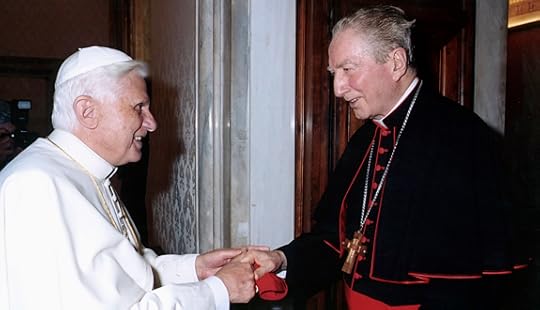
What Cardinal Martini Said, and What He Didn’t Say | Russell Shaw | Catholic World Report
The late cardinal’s controversial interview was less interesting than what some progressive Catholics have tried to make of it.
Let’s face
it—there are times when matters that exercise Catholics in their intra-Church
dogfights look rather small in comparison to the great themes of faith. As I
was reading some of the whooping by progressive Catholics that greeted the
posthumous publication of an interview by Cardinal Carlo Maria Martini of
Milan, I thought of Dietrich Bonhoeffer’s description of what he found at Union
Theological Seminary in the early 1930s:
In New York, they preach about virtually everything; only one
thing is not addressed, or is addressed so rarely that I have as yet been
unable to hear it, namely, the gospel of Jesus Christ, the cross, sin and
forgiveness, life and death.
The Tablet of London, which along with the Corriere della Serra of Milan was one of
the first periodicals to receive and publish the Martini interview, probably wasn’t
thinking of that when it welcomed this short document as “a sweeping indictment
of the last two papacies.” Yet the late Cardinal’s remarks are in reality
rather small beer, while the “indictment,” such as it is, is one Pope John Paul
II and Pope Benedict XVI could have adopted, at least partly, as their own.
At the
start, let us recognize that Cardinal Martini, who died August 31 at the age of
85 after a long struggle with Parkinson’s disease, was a man of stature and, by
all accounts, a conscientious pastor of his huge archdiocese. A Jesuit and a
Scripture scholar, he’d served as rector of the Pontifical Biblical Institute
and, briefly, of the Gregorian University before Pope John Paul tapped him for
Milan in 1979. This appointment did honor to appointee and appointer alike since
it illustrated John Paul’s self-confident willingness to provide prominent
platforms for talented churchmen whose views he by no means always shared. And
predictably, long before retiring in 2002, the cardinal had become the leader
of the loyal opposition in the College of Cardinals.
His newly
published interview was given shortly before his death to an Austrian Jesuit
colleague and a woman friend. Its most-quoted passage is this:
September 20, 2012
The theology of Abp. Joseph Augustine DiNoia, O.P.
Archbishop Joseph Augustine DiNoia, O.P., is a very fine
theologian who taught theology for decades and has written extensively. Several questions about his teachings
are probably on the minds of Traditionalist Catholics since his recent
appointment as vice-president of the Pontifical Ecclesia Dei Commission. A few hours in a seminary library were
enough to answer some of them.
1) What does the new vice-president of the Ecclesia Dei
Commission teach about the Eucharist?
Then-Father DiNoia contributed a chapter to a Book of
Readings on the Eucharist published in
2006 by the Bishops’ Committee on the Liturgy of the United States Conference
of Catholic Bishops. Although the
essay, entitled “Eucharist and Trinity”, is focused on “communio theology”, the author refers to the Mass as a “sacrificial
banquet”. A few excerpts
follow:
The Church is
a creation of the triune God: from
the Father, who sends his Son and his Spirit to transform creaturely persons so
that they come to share, with the uncreated Persons of the Trinity and with one
another, a communion of divine life.
(p. 41)
We have been
invited from the highways and byways to be guests at a wedding banquet that we
did not prepare and in which our participation is confirmed only by our being
suitably clothed in Christ, in robes “washed ... in the blood of the Lamb” (Rev
7:14; see Mt 22:1-14). (p. 41)
The prayer of
consecration involves a solemn invocation of the Holy Spirit, by whose power
the death and Resurrection of Christ are made present, and the bread and wine
are transformed into his Body and Blood.
Then, by worthily consuming the Body and Blood of Christ, the faithful
are made divine and brought into union with the Father and with one another,
through Christ and in the power of the Holy Spirit. (p. 44)
2) What does Archbishop DiNoia think about ecumenism and
interreligious dialogue?
Continue reading on the CWR blog.
Celebrating the Feast Day of Padre Pio with 20% off!

Celebrating the Feast Day of Padre Pio with 20% off!
Offer ends Tuesday September 25th, 2012 at 12:00 midnight EST.
These prices are available online only through Ignatius.com
The beloved Saint Padre Pio, whose feast day is September 23,
was blessed with incredible spiritual gifts, including healing,
bi-location, reading of souls, and stigmatic wounds. He led a life that
was not only devoted to God, but also to helping souls that were
physically and spiritually ill. Learn more about this amazing saint
through the many books and films we are offering below, all at 20% off!
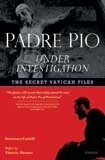 Padre Pio Under Investigation
Padre Pio Under Investigation
The Secret Vatican Files
Francesco Castelli
The documents in this book reveal every aspect of Padre Pio's life
from his amazing supernatural gifts to his health. In his depositions,
he admits, under oath, to the phenomenon of bi-location and to other
supernatural charisms, and for the first time tells the detailed story
of his stigmatization. Also included are letters from his spiritual
father and a chronology of his life. Illustrated with black and white
photos. Also available as an e-book.
Regular price: $17.95, sale price: $14.36
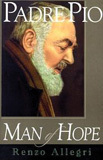 Padre Pio
Padre Pio
Man of Hope
Renzo Allegri
Beatified on May 22, 1999, Padre Pio of Pietrelcina (1887-1968) was
a Capuchin monk and mystic whose life was marked with miracles and
wonders, but who said that his only desire was "to be a poor friar who
prays." In this intimate biography, you will see the results of this
humble Capuchin's prayers and discover for yourself the Source of his
great hope.
Regular price: $14.95, sale price: $11.96
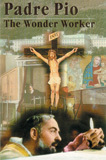 Padre Pio
Padre Pio
The Wonder Worker
Edited by Br Francis Mary, F.F.I.
Though the book records many authenticated wonders, the book's main
virtue consists in recounting the life and heroic virtues of this
modern day Saint who shows that the way to personal holiness is very
much with us in our day. The first seven chapters are a biographical
sketch, followed by over thirty chapters dealing with the many inspiring
facts pertaining to his life and charisms.
Regular price: $12.95, sale price: $10.36
Films
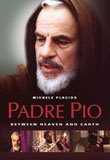 Padre Pio
Padre Pio
Between Heaven and Earth
Based on the historical records and the personal testimony of his
fellow friars, this is the amazing true story of the life of the famous
stigmatic monk, St. Padre Pio, a contemporary saint who died in 1968.
Blessed with incredible spiritual gifts, including healing, bi-location,
reading of souls and the stigmatic wounds, Padre Pio was a powerful
witness for Christ, and a great spiritual guide to countless souls for
over fifty years.
Regular price: $24.95, sale price: $19.96
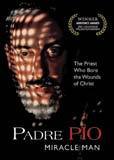 Padre Pio
Padre PioMiracle Man
This movie captures the Capuchin friar's intense faith and devotion,
and deep spiritual concern for others, as well as his great compassion
for the sick and suffering. It reveals the amazing details and events in
Padre Pio's life as a boy and throughout his 50 years as a friar,
dramatizing the frequent attacks of the Devil on him, as well as the
persecution he suffered at the hands of people, including those in the
church.
Regular price: $24.95, sale price: $19.96
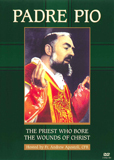 Padre Pio
Padre Pio
The Priest Who Bore The Wounds of Christ
In this 13 part series from EWTN, Fr. Andrew Apostoli explores the
extraordinary life of the humble Italian priest who has become one of
the most famous stigmatists of Church history. From his childhood to the
documentation of the wounds given by Christ, and other many mystical
gifts, this series shares Padre Pio's life through his own writings and
the eyes of fellow priests.
Regular price: $29.95, sale price: $23.96
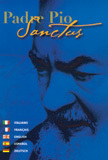 Sanctus
Sanctus
Padre Pio
This beautiful film on DVD gives the best complete coverage and
overview of the life and spirituality of St. Padre Pio. The 135 minutes
include the award-winning biographical documentary, Padre Pio: Man of God,
along with 80 minutes of new previously unseen footage that includes
scenes from his Beatification and Canonization, interviews with close
associates, a biographical synthesis, visits to his home, monastery,
tomb, and much more.
Regular price: $19.95, sale price: $15.96
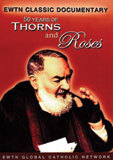 50 Years of Thorns and Roses
50 Years of Thorns and Roses
Ordained a priest in 1910, the five wounds of Our Lord became
visible on Padre Pio's body eight years later, thereby making him the
first stigmatized priest in the history of the Church. For the next 50
years, until his death in 1968, Padre Pio passed his life in ineffable
sufferings but with moments of great joy from his union with God.
Regular price: $19.95, sale price: $15.96
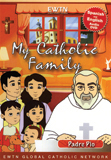 Padre Pio
Padre PioMy Catholic Family
In this wonderful new animated series, Thomas and his wife Helen
help their children Alex and Sarah come to a greater understanding of
the importance of virtue by teaching them about the lives of the Saints.
The life of Padre Pio and his devotion to the Sacrament of Confession
are explored.
Regular price: $14.95, sale price: $11.96
Audio Book
 Padre Pio
Padre Pio
The Wonder Worker
Edited by Br Francis Mary, F.F.I.
Though the book records many authenticated wonders, the book's main
virtue consists in recounting the life and heroic virtues of this
modern day Saint who shows that the way to personal holiness is very
much with us in our day. The first seven chapters are a biographical
sketch, followed by over thirty chapters dealing with the many inspiring
facts pertaining to his life and charisms. 7 CDs total.
Regular price: $38.95, sale price: $31.16
Catholic World Report
What Is America Today? by Fr. James V. Schall, S.J.
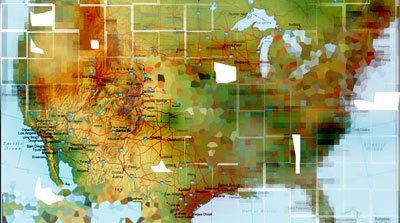
America no longer has a coherent, common view of itself and what
it stands for.
If we Americans listen to our own music, we hear that America is the
land of the free and the home of the brave. We have purple mountains and
amber waves of grain. “God bless America.” But not everyone sees us
this way, even among our own citizens. It is probably not wise to divide
the world’s view of America into merely five or six different
categories or descriptions. Still, it is helpful to reflect how
differently the country is seen to be. We wonder if we are in a “decline
and fall” situation. Or are we on the verge of a new breakthrough.
Perhaps the barbarians are already in the gate. We just do not want to
notice. They look like us. Our leadership seems vain and self-serving.
Much depends on what we are willing to see rather than what is in fact
there to see.
Homiletic & Pastoral Review
The Theology of St. Paul by Fr. Kenneth Baker, S.J.
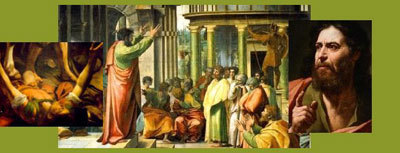
St. Paul is the most important theologian in the history of the Church
I have spent many hours preparing some homilies on the theology of St.
Paul. My guide in this was Archbishop Fulton J. Sheen who said that he
spent one hour of preparation for every minute of preaching. That study
was most rewarding and gave me a few valuable insights into the
thinking of St. Paul.
It is clear to me that St. Paul is the most important theologian in the
history of the Church—with the possible exception of St. John the
Evangelist, who was taught by Jesus himself—since St. Paul first gave
expression to many truths that are the basis of the Creed and the Catechism of the Catholic Church.
Industry of Death vs. Culture of Life

Industry of Death vs. Culture of Life | Carrie Gress | Catholic World Report
Pro-abortion advocates talk of “back alley” abortions while ignoring life-giving alternatives for women in crisis pregnancies.
“When
I went to Planned Parenthood for my five abortions, I was never given any sort
of a choice other than to pay my money, sign the papers, and go in the back for
the procedure,” says Lisa Kratz Thomas.
Kratz
Thomas, a former drug addict who turned her life around and is now a mother,
motivational speaker, and talk-show host, said her quick fix with abortion didn’t
help her with her greatest needs. “It was very impersonal, and it was like, the
less talk the better. There was no interaction with the staff and hardly anyone
talked about the procedure. No asked ever asked me about what needs I may have
had, or why I was a repeat customer.”
Every
four years as election rhetoric heats up, pro-abortion advocates threaten that
a vote for a pro-life president would send women to the “back alleys” for abortions—and
this year is no exception—but the back alley reality may already be here.
The
idea of the back alley abortion has long been a tactic used by pro-abortion
supporters to scare voters into believing that without legalized abortion women
would be faced with unethical doctors, unregulated surgeries, emergency room
visits and even death due to botched procedures.
Marilisa
Carney, one of the co-founders of 40
Days for Life, says, “Planned Parenthood, in their factory approach to
abortion, has really legitimated the back alley. In their focus on profits over
women’s health, Planned Parenthood and the abortion industry promote that which
they were supposed to rid society of.”
The
back alley statistics were first cooked up by abortionist Bernard Nathanson,
the co-founder of the National Association for the Repeal of Abortions Laws,
which became the National Abortion Rights and Action League (NARAL). He claimed
that 5,000-10,000 women lost their lives annually from botched abortions.
Nathanson, who performed more than 75,000 abortions during his career—including
on his own child—later admitted to concocting the numbers to help legalize
abortion.
40% off Tessa Bowman' "Employee Pick of the Week"

40% off Tessa Bowman' Pick of the Week*
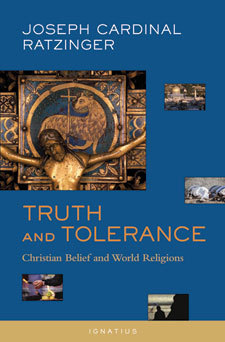 Ratzinger's
Truth and Tolerance
Ratzinger's
Truth and Tolerance
had been tempting me from the bookshelf where it lay since I began at
Ignatius Press a few months ago. Arriving with a background in
International Development from a public university, I wondered how
cultural diversity, tolerance and world religion would be addressed by a
man who leads the Church that claims to possess (that public school
no-no phrase) “absolute truth.”
What I discovered in its pages was not a dainty, unmoving response
to my curiosity. Instead it offered a powerful and consequence-bearing
discussion of what it means to discover, explore and accept truth—with
confidence. It presents neither a pompous declaration of “religious
superiority,” nor an apologetic, half-hearted “acceptance” of anything
and everything. Ratzinger suggests a “radical process of reflection
about what [Christians] are and what they are not, what they believe and
what they do not believe, what they have to offer and what they cannot
offer.”
Truth and Tolerance
becomes a call to practically question the premises on which one lays
claim to truth, and once discovered, to lovingly act upon that truth. A
wonderful read for anyone wanting to explore or reignite their beliefs
in the context of other religions. Truth and Tolerance is also available as an ebook.
 Tessa
TessaBowman joined the Ignatius Press accounting team in May after
graduating from UCLA in 2011 with a degree in International Development
Studies. After working on an education project in Kenya, Tessa left
Africa refreshed and determined to work for another organization which
explored and defended her beliefs. She was thrilled to find her place at
Ignatius Press. She pays the bills, so keep smiling at her.
*Employee
Pick of the Week program features savings of 40% off a book, movie, or
compact disc personally chosen and recommended by an Ignatius Press
employee. Each week, an Ignatius Press employee will select a favorite
book, movie, or other Ignatius Press product and write a few sentences
about why he/she thinks customers will enjoy the particular selection. A
short bio of the selecting employee will also be included, giving
customers a chance to learn a bit more about the people who are Ignatius
Press
September 19, 2012
The greatest of six poverties, according to Mother Teresa
Katherine Infantine
has posted a piece on the First Thoughts (First Things) blog about Fr. Maasburg, author of Mother Teresa of Calcutta: A Personal Portrait,
Last night here in Manhattan, Father Leo Maasburg, an Austrian priest who was a close friend, spiritual advisor, translator, and 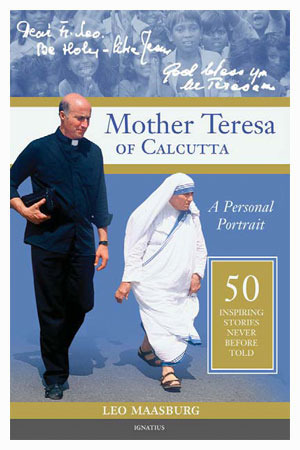 confessor of Blessed Mother Teresa, shared stories and offered a window into the spirituality and life of the woman that Blessed John Paul II referred to at her beatification as “one of the most important figures of our time, one of the greatest missionaries of the 20th century.”
confessor of Blessed Mother Teresa, shared stories and offered a window into the spirituality and life of the woman that Blessed John Paul II referred to at her beatification as “one of the most important figures of our time, one of the greatest missionaries of the 20th century.”
During the question and answer session after the talk, Father Maasburg enumerated what “Mother” had considered the six types of poverty that cause someone to be the “poorest of the poor.” The worst of these poverties in Mother Teresa’s eyes was the poverty of not being able to learn about and practice one’s faith.
Read the entire post, "One Small Step for India..."
Also, Fr. Maasburg was interviewed a couple of weeks ago by Vatican Radio, on the 15th anniversary of the death of Mother Teresa:
Wednesday 5th of September marked fifteen years since the death of Blessed Mother Teresa of Calcutta.
To
mark this occasion Veronica Scarisbrick brings you an interview with
someone who personally knew her. He's Monsignor Leo Maasburg who
recently wrote a book drawn from the years spent with her as spiritual
advisor. The title of the book is 'Mother Teresa of Calcutta, a Personal
Portrait: 50 inspiring stories never told before" and is published by
Ignatius Press.
The stories Monsignor Maasburg , who's
currently National Director of the Pontifical Missionary Societies in
Austria, recounts, date back to his years as a young priest and shed
light on some of the lesser known aspects of Mother Teresa, including
her travels from India to Rome, from Moscow to Cuba, to New York.
Listen to Fr. Maasburg's interview on the Vatican Radio site.
For more about Mother Teresa of Calcutta: A Personal Portrait, visit the book's website.
September 18, 2012
Stop the presses! Jesus was married! Oh no!
The Da Vinci Code may have come and gone, but the same dubious "scholarship", breathless "gotcha!" tactics, and general, sloppy silliness lives on—in the New York Times:
A Faded Piece of Papyrus Refers to Jesus’ Wife
By LAURIE GOODSTEIN
CAMBRIDGE, Mass. — A historian of early Christianity at Harvard Divinity School has identified a scrap of papyrus that she says was written in Coptic in the fourth century and contains a phrase never seen in any piece of Scripture: “Jesus said to them, ‘My wife …'”
The faded papyrus fragment is smaller than a business card, with eight lines on one side, in black ink legible under a magnifying glass. Just below the line about Jesus having a wife, the papyrus includes a second provocative clause that purportedly says, “she will be able to be my disciple.”
The finding was made public in Rome on Tuesday at an international meeting of Coptic scholars by the historian Karen L. King, who has published several books about new Gospel discoveries and is the first woman to hold the nation’s oldest endowed chair, the Hollis professor of divinity.
Let's be clear: I don't have a problem with a news story about this fourth-century scrap of gnostic text that has little or nothing to do with the historical Jesus described in the four Gospels and testified to by first-century Christian witnesses. I do have a problem with how the story is presented, as it is simply misleading. First, the headline: "...Refers to Jesus' Wife". Sure, it may refer to "Jesus' wife", but that is akin to me writing a note with reference to George Washington's harem or mention of Thomas Jefferson's homosexual lover. Saying it doesn't make it so, especially many decades, or even centuries, after the fact.
Carl E. Olson's Blog
- Carl E. Olson's profile
- 20 followers



